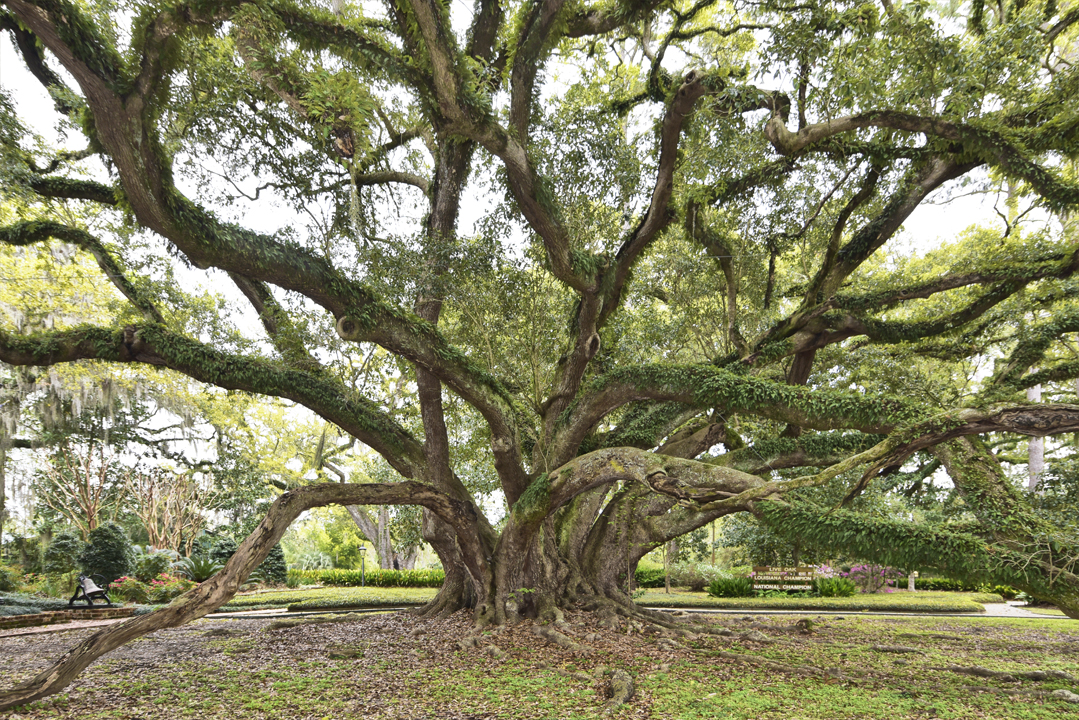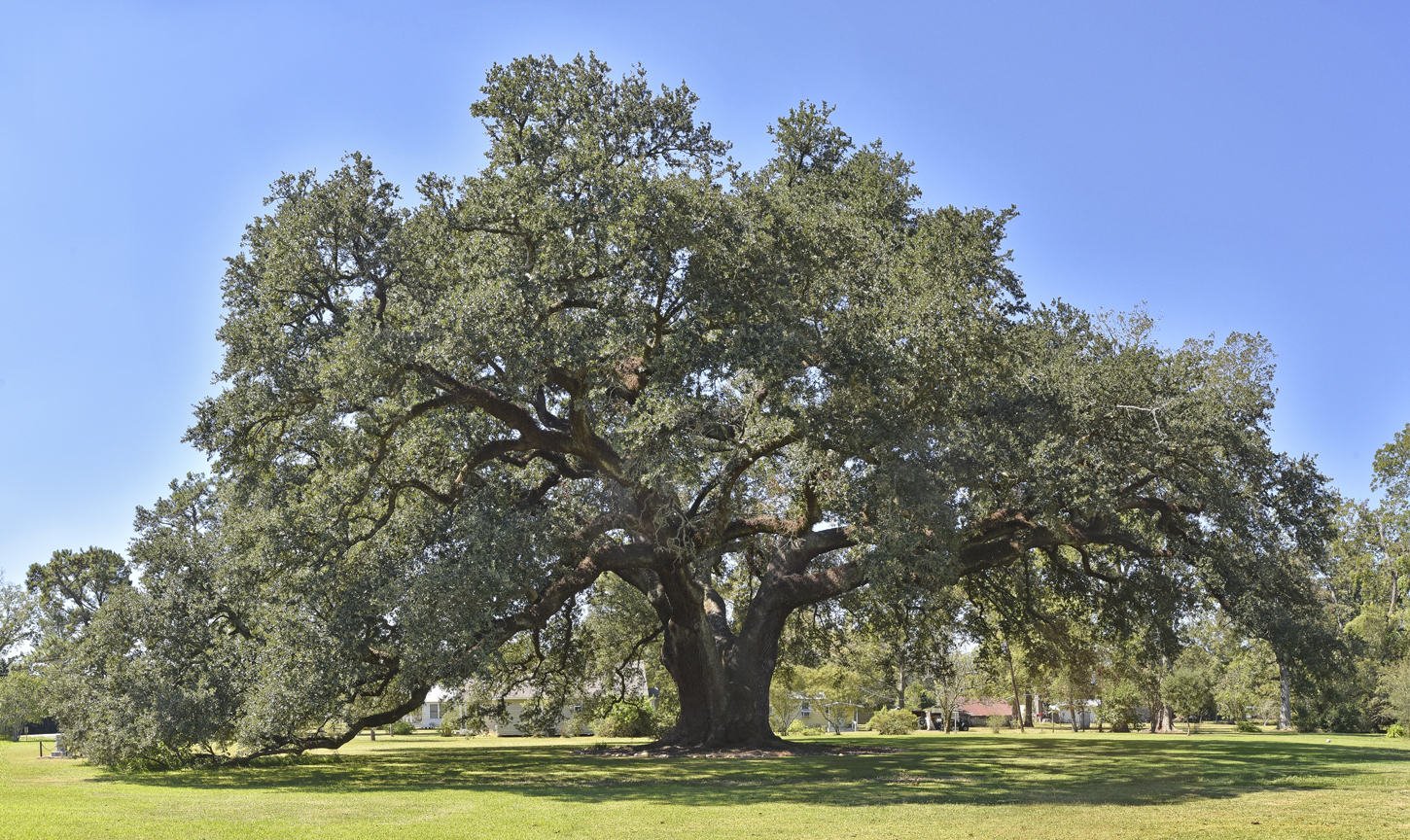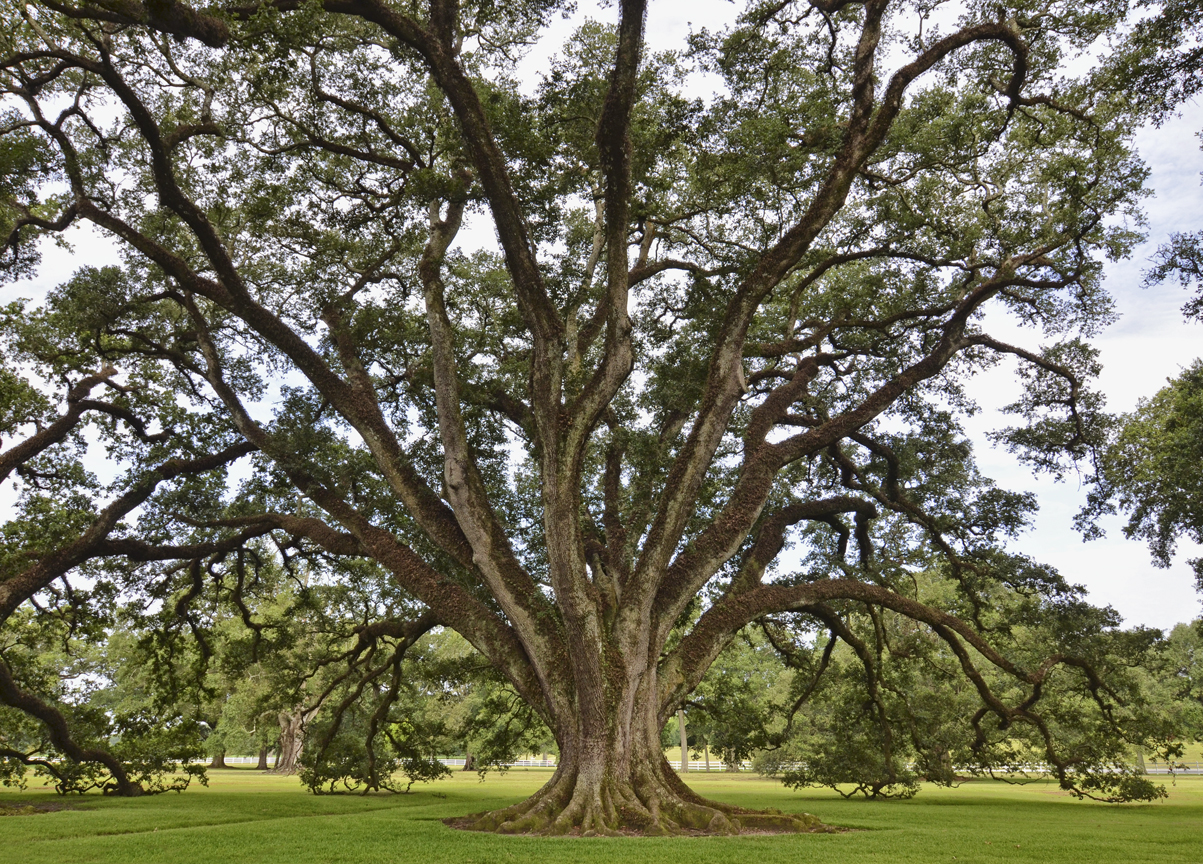
In April 1934, Dr. Edwin Lewis Stephens, the first president of the Southwestern Louisiana Institute (now the University of Louisiana at Lafayette), published an article in the Louisiana Conservation Review titled, “I Saw in Louisiana a Live Oak Growing.” (A copy of this article can be found here.)
From his orientation as a scholar and poet, he recognized the deeper truth of this icon of the South — that more than any other aspect of the landscape, the live oak symbolically reflects the most memorable and distinctive characteristics of the cultures and people that settled South Louisiana: strength of character, forbearance, longevity and a hearty nature.
Stephens was inspired to propose the creation of an organization that might preserve and promote interest in the most senior members of this oak species, those “whose age is not less than a hundred years.”

He found plenty of examples near his home in Lafayette, Louisiana. As he noted in his Conservation Review article, “I, at present, number among my personal acquaintance forty-three such live oaks in Louisiana eligible for charter membership (with a girth of at least 17 feet and an age of 100 years or more).”
These forty-three oaks comprised his original inductees into what is known today as the Live Oak Society. More than 80 years later, the Society counts 8500-plus member oaks on its registry across 14 states, including “junior league” trees with a girth of at least eight feet.
Dr. Stephens served as the acting secretary of the Society until his death in November 1938. By that date, he had compiled a list of 57 oaks that comprised the original member trees of the Live Oak Society. Stephens re-visited many of the Society members while he was the secretary, remeasuring them to determine their growth rate and often photographing the trees for his personal records. He felt it was important to maintain regular records of the oaks’ growth to more accurately determine their age.

Following Stephens’ death, interest in the Society lagged until 1945 when Stanley C. Arthur, executive director of the Louisiana State Museum, assumed responsibility for record keeping and admission of new members. He issued the Live Oak Society Bulletin No. 1, New Series, which stated, “Dr. Stephens’ last published list, made in 1935, included 57 oaks. My revised list records 119 trees with their names, locations, measurements and sponsors.” Following Mr. Arthur’s death a few years later, interest in the Society again waned.
Then in 1957, the Louisiana Garden Club Federation assumed responsibility for maintaining records and registering new member trees. In 1963, Mrs. Harry Brown was appointed the chairperson, at which time she updated the registry and began registering new trees. Since then, interest in the Live Oak Society spread through the Garden Club Federation’s members across the South and the Society’s numbers swelled through the decades since. Currently, there are more than 8,000 live oaks on the registry.
Mrs. Brown was followed by Mrs. Louis M. Pfister, Mrs. Nona Borel, and Mrs. Verlyn T. Bercegeay. The current chairperson is Ms. Colleen Perilloux Landry. Applications to register a live oak can be found on the Live Oak Society’s website.
The Lafourche Live Oak Tour was created through the generous support of the Louisiana’s Cajun Bayou Tourism. For more information on Lafourche Parish events and activities, visit their website at LACajunBayou.com. All photographs and content ©William Guion, 2017.

Hello. I am inquiring about how to register our beautiful mighty oak tree with the society.
Our tree has so much history attached to it [last century agricultural hardware, included].
Thanks!
Stuart & Karen Smith
Karen, in case I haven’t answered your question, you simply need to go to the website for the Live Oak Society and complete the necessary registration form and send it to them.
Their website address is – https://www.lgcfinc.org/live-oak-society.html